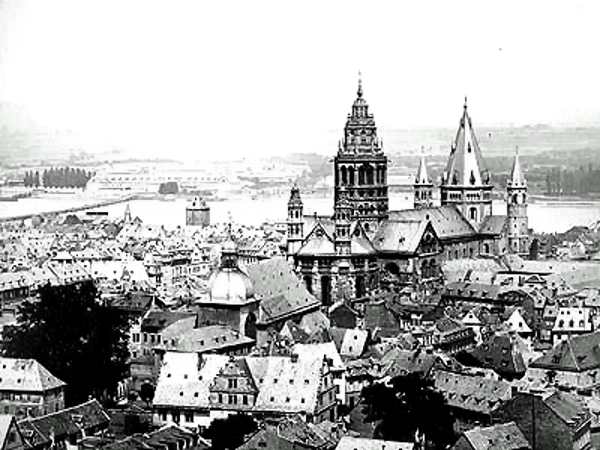When Mrs. Phillida Bathurst heard of her husband Benjamin’s sudden disappearance in Prussia, she immediately decided to set out on a desperate search for him. Along with her brother, she traveled to Perleberg, Prussia, via Sweden and the Baltic, using Swedish passports to mask their identities. Ahead of their arrival, she dispatched Heinrich Röntgen, a trusted associate, to investigate and gather any possible information.
When they met Röntgen in Berlin, he shared a shocking piece of news: a woman in Magdeburg had reported that Benjamin was being held captive in the fortress there. According to the woman, the Governor of Magdeburg had confessed during a social event, “They are looking for the English Ambassador, but I have him up there,” pointing to the fortress. Röntgen corroborated this claim, saying that the Governor admitted to making this statement but later claimed it was a mistake.
A Fraught Visit to Magdeburg
Determined to find her husband, Mrs. Bathurst set out to meet the Governor of Magdeburg personally. During a tense two-hour audience, the Governor reiterated what he had told Röntgen. He claimed that during a conversation at a ball, he had spoken of having an English prisoner in custody but had confused Benjamin Bathurst with a man named Louis Fritz, an English spy in the employ of George Canning, then Foreign Secretary of the United Kingdom.
When Mrs. Bathurst demanded to see this Louis Fritz, the Governor informed her that he had already been transferred to Spain. Yet, upon their return to London, Röntgen wrote to Canning for clarification, only to receive a denial that any such person existed. Frustrated and more determined than ever, Mrs. Bathurst’s suspicions grew.
A Mysterious Visitor: The Arrival of Comte D’Antraigues
Shortly after, Röntgen informed Mrs. Bathurst that a certain Comte D’Antraigues wished to speak with her. This name immediately caught her attention; it matched the name mentioned in an unfinished letter found in her husband’s trousers, which had been discovered in the woods near Perleberg. When she met him, the Comte railed against Napoleon and the French, but Mrs. Bathurst remained cautious.
D’Antraigues insisted that the story she had heard was true — Benjamin had indeed been abducted by armed men and taken to Magdeburg. According to him, the Governor had written to Joseph Fouché, the French Minister of Police, asking what should be done with the prisoner. The response allegedly was that “mad Englishmen should not bother the Emperor” and that the Governor should dispose of him. Faced with such pressure, the Governor supposedly fabricated the story about Louis Fritz to cover himself.
Mrs. Bathurst asked for proof of this grim tale. The Comte promised to send a ciphered message to France and return with the reply, urging her to remain in London while he did so. However, the promised evidence never arrived.
Who Was Comte D’Antraigues?
Emmanuel Henri Louis Alexandre de Launay, Comte d’Antraigues, was a complex figure. Born in Montpellier on Christmas Day, 1753, he joined the army at fourteen and rose to become a cavalry captain. He left the military in 1778, mingling with intellectual circles that included Rousseau and Voltaire. Initially a supporter of the French Revolution, he switched sides after witnessing the mob storming Versailles on October 5, 1789, and became an ardent defender of the Bourbon monarchy.
D’Antraigues’s political allegiances shifted frequently. Following his involvement in a plot to help the royal family escape, he fled to Switzerland, where he married a former opera singer, Madame de Saint-Huberty. His role as a secret agent for King Louis XVIII of France forced him to move across Europe frequently. After being captured by the French at Trieste, d’Antraigues and his wife escaped, reportedly with help from Napoleon’s wife, who admired Saint-Huberty’s vocal talents.
However, his fortunes changed once more when he started working for the Russian Czar Paul I. He later moved to London, where he was employed by George Canning as a spy. This tangled web of shifting allegiances left d’Antraigues with many enemies.
A Deadly Encounter: The Demise of Comte D’Antraigues
On July 22, 1812, d’Antraigues was scheduled to meet with Canning. He and his wife rose early to travel to the city from their home in Barnes Terrace, London. However, their Italian servant Lorenzo harbored a deadly plan. At seven o’clock, he retrieved a pistol and a dagger and ambushed his master on the staircase, missing his first shot and then stabbing him in the shoulder. Mortally wounded, d’Antraigues staggered back into his bedroom, where Lorenzo turned the weapon on Madame de Saint-Huberty, stabbing her fatally in the chest.
In his dying moments, d’Antraigues tried to defend himself, but Lorenzo had already decided to end his own life. After stabbing both his employers, he shot himself with one of d’Antraigues’s loaded pistols.
The circumstances surrounding this murder-suicide have remained controversial. Some believe that the servant, who had been dismissed the previous day, acted out of revenge. However, others suspected that Napoleon or Louis XVIII, both of whom had reasons to silence d’Antraigues, orchestrated the attack.
The Aftermath: Mrs. Bathurst’s Endless Search for Answers
Mrs. Bathurst never received the proof she needed from d’Antraigues to confirm his story about her husband’s fate. Despite her tireless efforts and willingness to meet anyone who might hold a clue, she was left with more questions than answers.
Her quest to find her husband was not over, but this meeting with d’Antraigues and the dark twist of his murder left her even more uncertain of the truth. Did Benjamin truly perish at Magdeburg, or was there another twist in his disappearance?
Theories and Speculations Continue
To this day, the fate of Benjamin Bathurst remains one of history’s unsolved mysteries. Was he abducted by French agents? Did he fall victim to local robbers, or was he simply lost to the labyrinthine intrigues of European politics? As new theories emerge and old ones resurface, the question still lingers: What really happened to Benjamin Bathurst?

